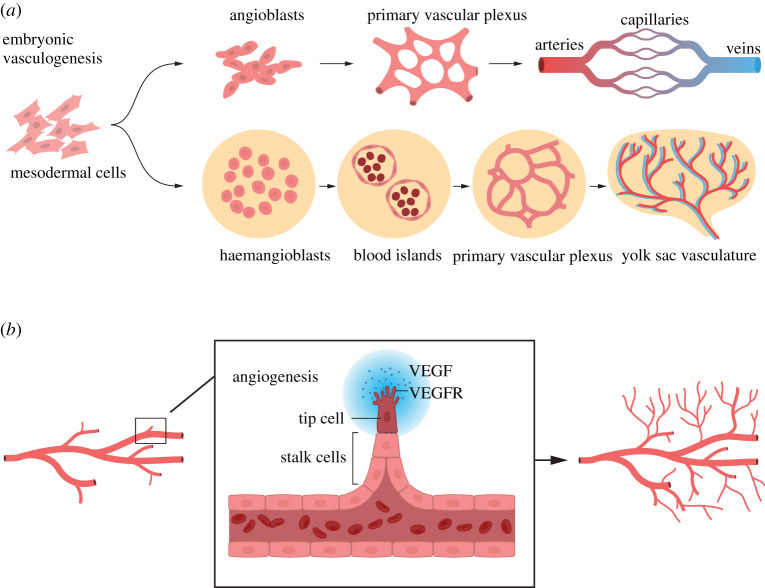Figure 2.
Vasculogenesis and angiogenesis. (a) Vasculogenesis: the embryonic and extraembryonic vasculature originates from mesodermal cells. During the embryonic vasculogenesis, mesodermal cells differentiate to angioblasts, which form a primary vascular plexus. The blood vessels in the vascular plexus subsequently acquire arterial (red) and venous (blue) identities along an arterial–capillary–venous axis. During extraembryonic (yolk sac) vasculogenesis blood islands are initially formed from haemangioblasts, and the blood islands later generate a primary vascular plexus. This extraembryonic vascular plexus subsequently produces the vasculature in the yolk sac. (b) Angiogenesis: from an initial vascular tree, new blood vessels are generated by sprouting. Sprouting occurs by a leading tip cell, which responds to vascular endothelial growth factor (VEGF) via VEGF receptors (VEGFRs) and which is followed by stalk cells that form the lumen of the new sprouting vessel.

